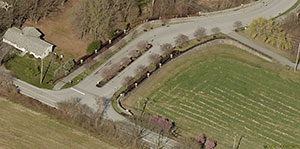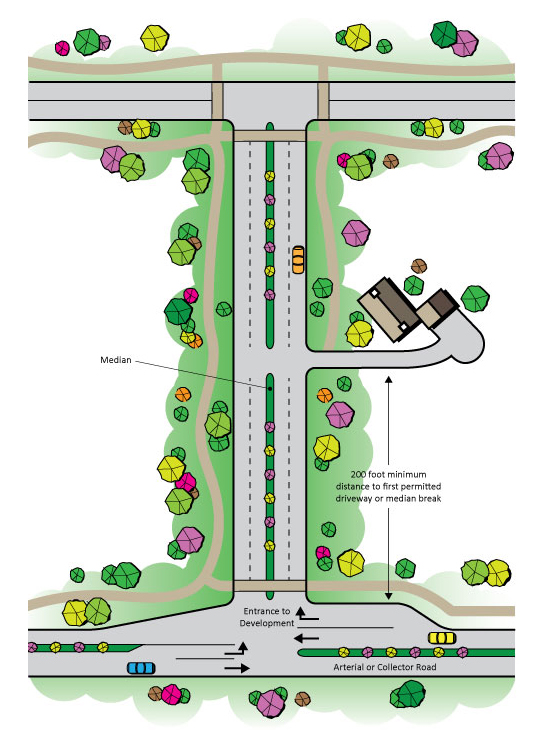Boulevard
Boulevard
A type of street having the opposing travel lanes separated by a landscaped median. Also known as a divided street or highway.
Boulevards provide a method of separating opposing traffic flows for residential areas, commercial, institutional, and industrial developments. They should extend as far as the first intersection within the development. A boulevard median should not be included in the calculation of the cartway width, but should be included in the calculation of the right-of-way width.
The provision of separated, two-lane cartways allows for access to a development if one of the cartways is closed due to an emergency. The unobstructed lanes can be used for two directional travel. Often, an entrance to a development is designed with a boulevard treatment that is not functional because it only separates the cartway for a short distance. If the cartway is obstructed beyond the separated boulevard and no other access point exists, then all access to the development is cut off.
An entrance road designed as a landscaped boulevard is an attractive feature found in many of the successful cluster subdivisions. While this might not be appropriate in rural areas where the location and entrance to the subdivision should be more subtle, it works well in suburban or transitional areas.


Boulevard entrance in Kennett Township; Boulevard entrance in Upper Uwchlan Township.
Recommendations
- A boulevard design should be utilized in cases where a second access or emergency access cannot be provided to a development.
- A recommended minimum width, preferably 6-8 feet, should be established for a boulevard median.
- A recommended minimum single lane width of 11 feet (uncurbed) or 13 feet (curbed) for each cartway in residential areas and 15 feet (uncurbed) or 16-18 feet (curbed) for each cartway in commercial areas, should be established..
- Extend a boulevard to the first intersection within the development. Median breaks may be permitted 200 feet from the beginning of the boulevard. This restriction exists due to minimum values for sight distance, vehicle stacking and corner clearance.
- Limit the number of cross-overs to avoid potential conflicts.
- Choose a landscaping treatment in the median that avoids sight distance problems. PennDOT typically does not permit trees to be planted within medians in PennDOT rights-of-way.
- Determine median maintenance responsibilities prior to plan approval.
- No parking should be permitted along boulevards.



